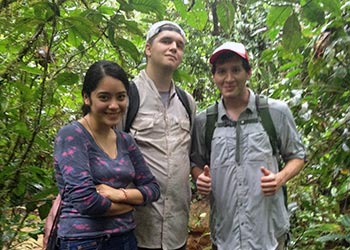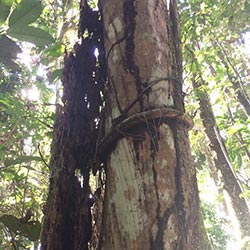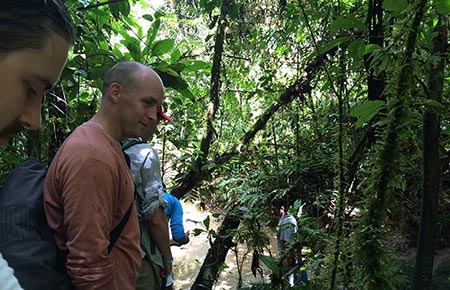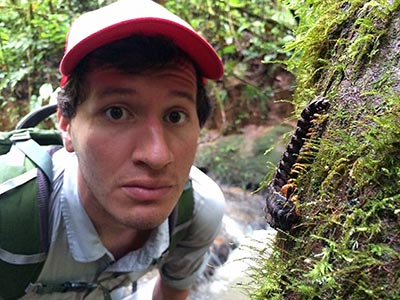By: Chris Merino

I am an undergraduate student majoring in Conservation and Environmental Science and minoring in Geographic Information Systems at the University of Wisconsin-Milwaukee. GIS is being utilized more around the world and this summer I took advantage of a study abroad program offered through the Geography Department at UW-Milwaukee, through which I was able to gain professional and international GIS experience.
I worked with two fellow UW-Milwaukee students along with our instructor Nick Padilla on a conservation mapping project based in the Ecuador’s Amazon Rainforest, just above the Napo River. Tod Swanson, the director of the Andes and Amazon Field School, and Nick Padilla developed the project. The school owns approximately 600 hectares of land in the rainforest where we mapped out waypoints of strangler figs and plotted tracts of forest that were previously harvested.

The strangler fig is an epiphytic plant that is becoming increasingly prevalent in tracts of the Amazon Rainforest that were previously harvested. Strangler figs find host trees and slowly strangle the trees to death over time to take their place. Our fieldwork involved long days of guided hikes by a local Kichwa man named Don Pedro through the jungle to identify strangler figs in the forest. Using the application ArcCollector we were able to collect locational point data using our smartphones to map approximately 50 strangler figs. We also recorded relevant attribute information about the strangler fig and ‘host’ tree. The data we collected will be used to support the research of a tropical ecology research team that is examining forest degradation due to strangler fig and potential measures to control strangler fig populations.

We focused on identifying and mapping tracts of secondary forest during the latter half of our time in Ecuador. The plots of land that we mapped out were areas of interest for forest restoration and long-term forest regeneration observation. The previous owners have impacted these sections of the forest through different activities such as harvesting the valuable tree species, converting forest to agricultural land, and hunting various animal species. This has disrupted the rainforest’s ecosystem, disturbed the land, and led to the need of restoration. We used ArcCollector and took miles long hikes with Don Pedro into the jungle to create polygon shapefiles. These ranged from 0.25 acres to 65 acres in area are now mapped with attribute information to help develop a plan to restore, protect, and preserve the land.
Apart from those two main aspects of our mapping project we also sought out to use GIS while in the jungle. We ended up using ArcCollector to capture moments on a map with different aspects of what we were learning about the rainforest and the indigenous culture in the Napo. The roads on our base map seemed to be off so we went ahead and created our own line shapefiles using ArcCollector as well. Another day we had the opportunity to work with Ian Cummins, who is a GIS professional and the Regional Director of the Runa Foundation (a non-profit that creates new value to tropical forests to benefit local people and the ecosystem). We ventured into the forest with him and took measurements of point data. These points were used in ArcMap to edit previously miscalculated shapefiles of land. During this time, we used both ArcCollector as well as GPS devices to record data.

Working in a remote area had many obstacles that we had to face from limited Internet, only one computer with ArcMap (25 miles away), language barriers, technical problems with our basemaps, to having snakes and huge bugs on our paths while tracing our polygon shapefiles. Our experiences in Ecuador helped me to develop valuable skills including geographic research skills, technical skills, working with a team, and trouble-shooting and problem solving in the field. These skills will continue to shine as I continue on my conservation and GIS career path. Overall it was an amazing experience to be able to work with such incredible people in the diverse and beautiful Ecuadorian Amazon.